|
Could experienced drivers in your family use a little refresher? Register: https://www.sasksafety.org/mature-driver-refresher-course-listings.html For many drivers in Saskatchewan, the only driving lesson they received was during "Driver's Ed", back in their High School years. This was followed by a license examination, which is sometimes a one-and-done adventure, with no required follow-up training. This training can feel like an eternity ago. Additionally, the profound changes to driving best practices such as electronics, vehicle makes, signage, traffic flow, and various other advancements over time can leave even an experienced driver feeling out of practice. The reality is, mature driver or not, we could all use a little refresher every now and then! Course Description: This completely free 6-hour Mature Driver Refresher Course is strictly informational and offered in a positive, open class environment. Participants' driver’s licenses are not affected and there are no required examinations. This training increases confidence when navigating Saskatchewan’s increasing city and highway traffic. It provides insight into how to adapt your driving habits based on the physical changes the body goes through as it matures. Find a FREE course in your community: https://www.sasksafety.org/mature-driver-refresher-course-listings.html Topics Covered:
It was 1926 when a creative group of students at Bladworth elementary school invented “Tin Lid Golf”, where tin pie lids were thrown towards 4-foot circles drawn in the sand across the playground. Now, nearly 100 years later, the free outdoor game of “Disc Golf” has roared to life worldwide.
Rated as the "4th best disc golf province in Canada", Saskatchewan has all the requirements – lots of accessible space, easily walkable terrain, and an outdoor-loving population of sports enthusiasts. Hal Johnson and Joanne Mcleod may have said it best with “Keep Fit and Have Fun!”, but staying fit is also a great way to prevent injuries and maintain a positive mental outlook.
Youth: With a very low startup cost, lightweight equipment, and almost-always free-to-play courses, any walk in the park can turn into an adventure for the whole family with Disc Golf. Set expectations low, keep the pace high, and the kids will be begging for more time outside! Seniors: In Saskatchewan, inactivity, social isolation, and loneliness plague our aging and elderly population. This leads to falls, the #1 cause of injury requiring hospitalization. Falls can be caused by a physical deterioration or a decline in motorskills, which can result in an injury, which may lead to a sharp decline in overall health and activity. Inactivity can be both a cause or effect of social isolation. Both injury and isolation can lead to addictions. Indigenous Peoples: In 2023, Peepeekisis Cree Nation hosted the first provincial or state-level tournament ever played on indigenous land. Disc Golf courses give a free, accessible, outdoor activity for all to experience in their community. New Canadians: What better way to explore Saskatchewan than to saddle up with free-to-rent disc golf packs at a provincial or regional park! Dozens of parks and communities in Saskatchewan feature Disc Golf courses.
Prominent Saskatchewan Communities with a Disc Golf Course: (Full List Here)
Want to support content just like this? Play a role in the creation of a province of safety excellence. Donate Today at: https://www.sasksafety.org/support-us... - Charitable Registration Number: 11914-0382-RR
Free training and resources are made available thanks to contributions from our Donors, Members and Sponsors that believe in our shared goal of creating a province of safety excellence. Mental Health Wellness Resiliency - The Council's Foray into the World of Inflicted Injuries8/31/2023
Historically shrouded in various stigmas and often received with discomfort and hesitancy, "Mental Health" has transitioned from being a term used only in the complex world of psychology and healthcare to a more prominent everyday topic of conversation.
As a result of more frequent exposure, healthy discussions pertaining to one's mental well-being are slowly becoming more common in Saskatchewan, especially in relationship to health and safety in the workplace. Access Training: https://www.sasksafety.org/online.html
As is the case with any trending topic, public awareness campaigns from large corporations and countless social media strategists have arrived to capitalize on the wave of attention. And while the arrival of mental health awareness is of course a good thing, how will caregivers, educators, and employers wade through the masses of testimonies, advice, and related solutions?
The Council proposes, after expert consultation, research, and development, that the skill of resiliency is the critical first step in developing a mental health foundation. Resiliency in this context means the ability to recover quickly, respond to challenges, and maintain poise through the hardest of times. Building the skill of resiliency is what we seek to inspire with the “Mental Health Wellness Resiliency” course.
This new course seeks to inspire resiliency in it’s participants by examining the perspectives of different people who have found ways to focus on healing that ultimately builds resiliency. Hosted by award winning author, speaker, and mental health expert Allan Kehler, and featuring Saskatchewan residents who share their stories, struggles, and healing journey, the Council’s content specialists combine digital graphic arts, interviews, statistics, and hosted lectures to develop an immersive and engaging learning experience.
It is an introduction to a broad topic, to start our minds on a journey of understanding what it means to be mentally healthy.
Along the way, learners are given numerous challenges to work into their daily routines that will further strengthen their health and ability to withstand the pressures of the everyday world.
This learning program has been led by Saskatoon’s Allan Kehler. Allan is one of Canada’s most sought-after experts when it comes to the topic of mental health and wellness. He has stood on more than 500 stages and is the bestselling author of four books.
Together with Allan, two subjects share their personal stories, struggles, triumphs and defeats on their journey in becoming mentally healthy. 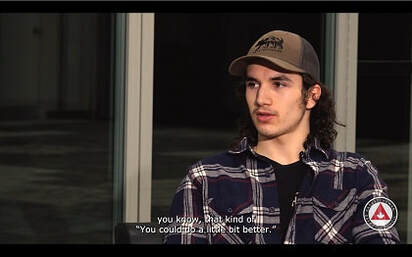
Jaxon, aged 17, has grown up in the Kenaston, SK area his entire life. After experiencing struggles in dealing with anger, isolation, and depression, Jaxon made the decision to reach out for help. Now, Jaxon employs various healthy strategies in understanding himself and those around him.
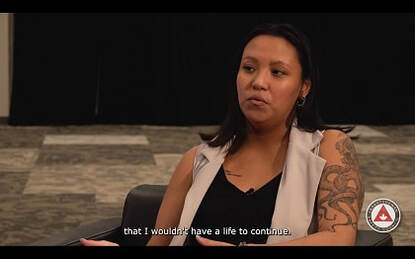
After suffering from domestic violence in an abusive relationship, Kayleigh made the bold decision to leave her old life behind. Sharing cultural teachings passed down to her, paired with other healthy tactics she has learned along the way, we learn how a self-discovery and self-improvement journey is never over.
It's time that Mental Health training smashed through the buzzwords. “Mental Health Wellness Resiliency” features real Saskatchewan stories, from real Saskatchewan people. Breaking down real problems, and discovering real solutions. Resiliency is what we seek to inspire.
Access Training: https://www.sasksafety.org/online.html Is charitable community injury prevention something your organization values? Consider sponsoring the Council as we create free resources to combat preventable injuries in Saskatchewan: https://www.sasksafety.org/sponsorship-support-levels.html Thanks to sponsors and volunteers, the fourth annual Cade Sprackman Safety Day took place at Hudson Bay Community School on May 30th, 2023, organized by Saskatchewan Safety Council. The entire K–12 school engaged to learn about injury prevention and honour Cade. Cade Sprackman grew up in Hudson Bay, SK, with his sister, two brothers, and loving parents. Cade had a driven love and passion for arts and cinema. He aspired to be a cinema director one day, after completing post-secondary education. On January 27th, 2015, only 3 weeks into a new job, Cade was involved in a workplace incident and was killed. He was only 18 years old. “People would share stories with me that he could light up a room and make everyone smile. As a young adult when he moved to Saskatoon, he couldn’t wait to get into the city and start his life. He was 18 years old and killed at the worksite”. “I will never forget the night the RCMP came to the door with the news that Cade had died. All they could tell me was that it was an industrial accident that had happened at work. They knew no details”. - Michelle Sprackman, Cade’s Mother To kick things off the day of, Aleece Anderson, currently an educator at Hudson Bay Community School shared a few words. As a close friend, who grew up with Cade, she shared how losing a close friend can impact your life, and why it is important to take safety seriously while on the job. Her story was followed by comments made by four attending representatives from Weyerhaueser Company Limited. After presentations, all attending youth participated in an Amazing Safety Quest, a non-timed, station-based obstacle course. The goal of this highly interactive educational activity is to, on a topic-by-topic basis, inform young and new workers of the extreme importance of workplace safety. Participants watched demonstrations and took part in activities where they learned about agriculture safety; ATV safety; Powered Mobile Equipment safety; trades and industry specific safety (fall arrest, construction, power tool awareness, PPE safety); water safety; hazard recognition; mining and forestry safety; electrical safety; CPR; AEDs and the hazardous affects of distraction. The safety demonstration stations were run by volunteers, many of whom attended to represent local area businesses. The event was participated in by:
To capture the event, CTV Yorkton shared an excellent article on why the Cade Sprackman Safety Day event takes place and why more should take place across Saskatchewan. Local Hudson Bay newspaper, the Junction Review also featured the event, sharing that the event was deemed a success. Amanda Wood, Community Relations Coordinator with the Saskatchewan Safety Council shares her thoughts, “This event is near and dear to my heart. Working closely with the staff at Hudson Bay Community School and the Spackman’s. When we plan this event each year, the community comes together to make sure the event is a huge success. This year, we had new experiences for the students to engage in. Something new to try and learn and be informed of the safety measures for a variety of different industries. Safety is important in any workplace, even in our everyday lives, safety must be a top priority. The feedback received by the students and educators was outstanding, being quoted the best one yet! Students were engaged and enjoyed the hands-on activities throughout the event. I’d like to thank the volunteers, educators, local businesses, and organizations who travelled to be a part of the event. It truly does take the support and expertise of everyone coming together to create a province of safety excellence! A tragic incident took place, we lost the life of a young man who had the whole world ahead of him. Saskatchewan Safety Council is proud to honour Cade, share his story and continue to advocate for our young and new workers to prepare them for a successful and safe working career. Thank you to Michelle and Jerry Sprackman for continuing to support our mission and being advocates for the Career Safety Education program!” An Amazing Safety Quest can be planned in any community, school or workplace in Saskatchewan. Are you looking for a fun way to incorporate safety-related activities at your next?
Learn more here: https://www.sasksafety.org/amazing-safety-quest.html. Note: In the weeks leading up to this event, participating high school students in Hudson Bay also completed Career Safety Education – A free series of online safety courses designed to develop awareness, attitudes, and habits that result in a culture of safety that prevents injuries both at home and in the workplace. This, combined with the Amazing Safety Quest, will surely result in the community of Hudson Bay and surrounding area having a future workforce that places great emphasis on the importance of working safely.  Rory McCusker, New Media Specialist Rory McCusker, New Media Specialist
Do you remember your first job?
I certainly do. I was 14 years old, starting work at a small commercial kitchen in my local curling club. The job was challenging, frustrating, and completely different from anything I had experienced. I remember every painful mistake during those first few days on the job. Looking back 16 years later, I can only smile and be thankful. Why? Because like many people in Saskatchewan, I credit that first job with teaching invaluable lessons that would stick with me forever.
Even my most nervous feelings at the time have now morphed into a blissful memory. I certainly remember how proud my parents were to see me earn money, build my personality, and adopt a keen interest in a tradable skill.
If you ask an experienced worker or elder in your community, “what was your first job?” I know that you will hear some treasured stories just like mine. How do I know this? Because that’s exactly what we did. Our content team asked dozens of people in Saskatchewan all about their first jobs.
We learned that first jobs have changed over time, and so have the training and safety practices… Along with minimum wage! We learned that basic training was not always a guarantee, and that injury prevention has not always been a priority.
But what does remain the same across the many generations of people we talked to, is this strong memory of a treasured personal journey. Experiencing those nerves and feeling that doubt. Only to conquer these feelings, emerging from the challenge a more confident, purposeful, and complete person. This common sentiment is written in capital letters across the glowing faces of those we asked about their first jobs.
I hope everyone in this province can experience something like I did in my first job. Like me, I hope new workers can regard their first jobs as a time they grew exponentially as a person. But sadly, this is not always the case. New workers at any age, in any industry, are at a much higher risk for workplace injury. Tragically, because of this, for some, their first job is also their last one.
Now, imagine living in a province where parents, teachers, elders, and friends are confident sending new workers into the wide world of employment, knowing that everyone in that workplace has already been trained in injury prevention. Imagine living in a province where new workers will learn how to make their own way, experiencing challenges and overcoming obstacles, absorbing lessons that will stick with them their entire life, all while being supported with training and orientation that will greatly reduce their risk of injury.
At the Saskatchewan Safety Council, we know that Saskatchewan can, and will be, a province of safety excellence. We believe that new workers deserve to experience all the ups and downs, challenges and obstacles, all while keeping themselves and others free from injury, and of course, all while forming treasured memories. With our commitment to embedding injury prevention content in public school curriculums, and by providing Career Safety Education Trainingfor FREE to anyone in the province, regardless of age, experience, or geographical location, we can be confident that new workers will start their employment journey with a much lower risk of injury.
Will you support this mission to create a province of safety excellence? Will you share this online training with your school, workplace, and community? If you believe in this mission of injury prevention for all, please consider subscribing to our content channels or volunteering with us.
As always, we thank you for reading, viewing, sharing, and for working together to create a province of safety excellence.
For a new worker in Saskatchewan, the first days of employment can feel overwhelming.
Though a new career is often a positive experience, those first days can be considered challenging, confusing, or even downright frightening for some. This might be because many new workers feel pressure as they are eager to contribute, be seen as useful, and sense belonging. For these new workers who are enthusiastically looking to prove themselves on their first days, valuable safety information could be missed, as they may often be distracted by trying their best to ‘fit in’ or ‘look the part’.
It is understandable for anyone working in a new professional setting for the first time to deal with fears involving doing the job incorrectly, fitting in socially, or having trouble understanding terms and concepts as they relate to their new work environment. Even for an experienced worker who is now comfortable at their job, learning a new task or responsibility can excite these same feelings. In other words, the prevailing fear that comes with starting a new job might be simply called the ‘jitters’, a fear of ‘messing up’, or ‘letting co-workers down’.
These strong feelings are common and to be expected as new workers begin their jobs in Saskatchewan. However, the significance of these realities is great. New workers struggling with these distractions are at higher risk of missing important training on safe practices, new environments, or dangerous equipment. These distracted, fearful attitudes lend themselves to terrible outcomes, as preventable workplace injuries and fatalities continue to happen to those who are not properly oriented to their new environment.
New workers will have enough personal stress to focus on during their first days on the job, which is why providing safety training early, at the first opportunity, or even prior to starting a new job is not only helpful, but also necessary. Such an early education helps form a foundation of safe thinking that reduces the likelihood of a preventable workplace injury, or worse.
The Saskatchewan Safety Council recognizes that for young people anxious to begin their career in Saskatchewan, a gap in training exists between leaving the education system and entering the workforces. This is why the Council has worked together with several other industry partners to provide a solution. That solution is called Career Safety Education.
“Career Safety Education”, is a completely free online series of workplace safety training programs that build a foundation of knowledge for any new worker by increasing the participants' awareness of hazards and providing a baseline understanding of how to manage the risks present in a broad variety of industries. Career Safety Education continues to grow, as more Saskatchewan organizations recognize and support this program.
As an Employer, recognizing an applicant or a new hire that has completed Career Safety Education is an indication of the value placed on having new workers who have committed themselves to learning safe practices.
As an Educator, encouraging students to participate in Career Safety Education so that they may make a safe transition and entry to the workforce shows that appreciation for this critical stage in a young person's life. As a Parent, recommending Career Safety Education is a clear indicator that safety and awareness are paramount as youth explore possible career paths. Business can show support for the program by becoming a sponsor and advocating for its use.
As Career Safety Education improves and expands, Saskatchewan communities can rest assured knowing quality resources have been put forward to ensure new workers have the resources they need to begin their careers safely.
Explore Career Safety Education: https://www.sasksafety.org/career-safety-education.html Consider Sponsoring the Saskatchewan Safey Council: https://www.sasksafety.org/sponsorship-support-levels.html The Les Donnelly Scholarship annually provides financial assistance to a post-secondary student who is a resident of Saskatchewan and has contributed to health and safety in their community.
In 2022, three recipients were awarded the Les Donnelly Scholarship. Laura was awarded a $3,000 scholarship, Kyler $1,000, and Hikari also $1,000. Kyler was the first student to ever complete the Career Safety Education Special Project Credit at his school. Over one semester, he spent over 100 hours researching workplace safety and completing safety courses. 26 of them! Our three recipients are shining examples of this dedication to community injury prevention. We hope that Laura, Kyler, and Hikari, continue to make a difference to the health and safety in their community and wish them all the best in their educational journey! Know of an aspiring post-secondary student in your community who has a passion for health & safety? Download an application form, and learn more about the Les Donnelly Scholarship here. "C’mon, we’re all doing it!" Have you heard this line before? Peer pressure, social tensions, and violence among youth is not new. Only the popular technology used to influence behviour has changed, and once again, young people have mastered it. In this ever-evolving electronic world, as technology and social development meet, young people always seem to be one step ahead of those that try to intervene early in violent behaviours; often educators, parents, and mentors. Youth have always mastered the trendy and avant-garde technologies of their times. Leading their development, testing the capabilities in ever more creative and involving ways. This often facilitates beautiful expressions of one’s self and environment that can be incredibly healthy and fulfilling. But, for all things there must be balance. Converse to the positive expression, technology can also facilitate the expression of harmful, violent, and even criminal behaviour. The world of cyberbullying - intimidation, humiliation, spamming, harassment, and other harmful tech-facilitated violent behaviours. The trouble for concerned caregivers is that these tech-facilitated communications cannot be seen, heard, or touched. And what’s more, is that the ever-changing evolution of these communication technologies will inhibit a caregiver’s ongoing ability to recognize, intervene, and ultimately treat the youth affected. We decided to investigate this ongoing issue with our friends at Campus Regina Public in Regina, SK. Working with grade 11 students in the “Advanced Media Production & Content Creation Program”, first we discussed issues that were affecting their mental health and social wellbeing. Then, we invited this class to participate hands-on in the production of a short video project on a relevant topic to their daily lives - cyberbullying. What we heard from this class, and what has been documented in surveys collected from hundreds of youth in Saskatchewan, is that the majority of communication happens online, and that cyberbullying had risen to become the most prominent form of bullying. - SAYCW "Youth Health Survey Report 2016" By the mid 2010’s, a technological shift in communication had already occurred long before the youth of today’s school years began. These youth have always felt pressure to join in these new, ever evolving online worlds of communication, a prominent example of which being “group chats”. These multi-user chat spaces are created for seemingly every social circle. Some chats are with family, some are just for friends. Some chats are for sports and rec groups, video games, events, parties… You name it, there is a group chat for it. Two years of online learning supported group chats between classmates and coworkers, teachers and students, further driving much of social behaviour to be expressed online, and further creating an implied approval from authority that online communication is appropriate in most circumstances. The relation between social media, and to an extent communication platforms, is only now starting to become linked to depression, anxiety, and other social stressors. Suicide rates have been steadily rising among youth in Saskatchewan, with suicidal plans and thoughts also being reported by higher and higher percentages of youth (SAYCW study). Behaviours like targeted harassment, privacy violations, social exclusion, and other harmful actions have migrated to the online space with ease. Youth take advantage of the idea that parents, teachers, mentors, and other caregivers are unaware of the harmful communications taking place online. - SAYCW "Thriving Youth, Thriving Communities 2019" Report
As mental health becomes a validated subject as we as caregivers do our best to prevent injuries and promote life, an acute awareness of the modern issues effecting youth is a must in a caregiver's quest to prepare youth with the tools they need to achieve their best. New electronic venues of communication, like “group chats”, are part of a digital world that youth have been forced to learn all on their own. By connecting these modern communication trends facing youth today, to the lessons we have learned from bullying and harassment in the past, we can better care for students and youth to ensure they are prepared to deal with the psychological pitfalls of these modern challenges. Looking for resources? FREE Mental Health Wellness Resiliency Training: https://www.sasksafety.org/online.html Sasktel Be Kind Online: https://bekindonline.com/ Saskatchewan Advocate for Children & Youth: https://www.saskadvocate.ca/ Want to support content just like this? Play a role in the creation of a province of safety excellence. Donate Today at: https://www.sasksafety.org/support-us.html - Charitable Registration Number: 11914-0382-RR Free training and resources are made available thanks to contributions from our Donors, Members and Sponsors that believe in our shared goal of creating a province of safety excellence. At 84 years old, Bob Butts had never imagined that regular exercise would change his life so dramatically. After a serious medical incident, his balance and strength were jeopardized, which put him at risk of a serious fall. Bob understood that his health would need more than a quick fix. It was time to become a consistently active person. “I had a Stroke in January of 2016, so I came here. When I came here, I couldn’t lift my hand up over my head. I couldn’t get out of the chair without help, and I weighed 256 pounds.”
Bob, and his personal trainer Kim, joke that Bob is now a “gym rat”, meaning he is someone who can often be found at the gym. With a nice morning routine and professional guidance in the weight room, Bob has seen consistent improvement in his physical abilities. The health benefits Bob has experienced from regular exercise keep him coming back. “I lost 65 pounds of fat and put on some muscle. I can walk in a straight line now, before I was all over the place. I used to get headaches… Kim got me doing these stretches, and before I realized it, I didn’t have headaches anymore.” Bob came to the gym so he could improve his balance, lose weight, and gain strength. While these goals were achieved, Bob also discovered that working out improved his mental health. This has greatly increased Bob’s confidence in himself and his physical abilities. “I have no health issues at all anymore. I want to be able to do things with my grandchildren, and great-grandchildren… My wife.” Bob’s journey reminds us that preventing falls and other serious injuries begins with ourselves. The most common reason for permanent and total disability is falls. Every year, 1 in 3 seniors experience a falling incident. After ensuring our homes are hazard-free, the next step in preventing falls is to strengthen our bodies. Our body is the vehicle in which we navigate our lives. To train our bodies with exercise is to respect our overall health. If you or a loved one wishes to investigate active lifestyles, first check with your doctor or health care practitioner. There are many Saskatchewan based resources to assist you in your fitness journey: Saskatchewan Seniors Mechanism - Bringing together Saskatchewan seniors organizations Forever in Motion - Helping older adults become physically active in their communities Saskatchewan Senior Fitness Association - Activity programs for adults fifty years of age and older Active Aging Canada - Trusted information and resources for older Canadians
Our Content Team took to the streets in Regina, SK, to ask “How do you prepare for winter driving?”.
Out of all the responses we received, four key points emerge. What were the most important winter driving tips from Saskatchewan drivers? Find out below! Be Visible - Saskatchewan drivers know that visibility can be a major challenge in the winter. That's why they take extra time to clear their vehicle of ice, snow, and debris before starting a drive. Proper headlights are also important for visibility in traffic. Daytime running lights (DRL's) are sometimes not enough to be seen, especially in snowy, foggy or misty weather. Be Gentle - Saskatchewan drivers check the weather and road conditions before their trip begins. They also place a greater emphasis on steering smoothly, while gently accelerating and braking when behind the wheel. Gimme Space - Saskatchewan drivers know that leaving early is a necessary adjustment to make in the winter driving season. Icy roads mean that following distances need to increase to at least 5 seconds, allowing drivers more time to react. Saskatchewan drivers understand that intersections become especially slippery, to adjust, a driver must manage their speed and give extra space for others. IDPE - Saskatchewan drivers understand that preparation is the best way to prevent collisions. However, in a critical moment, operational skills are a necessary defense. SGI suggests drivers practice the IPDE system. First, (I) - Identify the hazard or risk. Next, (P) - Predict the effect that hazard will have on your path. Then, (D) - Decide your best course of action. Finally, (E) - Execute that action.
What winter driving tips have you learned over the years? Share them in the comments below to help new Saskatchewan drivers!
The 3rd Annual Cade Sprackman Safety Day, held on June 1st at the Hudson Bay Community School, was an inspirational example of what a community dedicated to injury prevention can do. With the help of community volunteers, grades K-6 participated in a bike rodeo, and outdoor survival lessons. Grades 7–12 students interacted with several industry and health professionals, learning about a variety of workplace and recreational safety topics throughout the day. Cade Sprackman was a Hudson Bay Community School graduate, who was fatally injured in a workplace incident. Cade’s story is always remembered in this community, and we thank the Sprackman family for sharing their experience. Saskatchewan workers under the age of 25 are at the highest risk of injury, with over 3,000 injuries being reported annually. On June 1st, 2022, Hudson Bay, SK showed us the power of a community inspired to prevent young people from being injured or killed. To kick off the event, Cade’s parents, Michelle and Jerry Sprackman, delivered a speech that inspired students, teachers, and community volunteers. With the audience’s focus squarely on them, they spoke about Cade’s journey. From Hudson Bay to Saskatoon, inspired by his dream of attending arts school, Cade committed himself to a hazardous new job to earn money for his education. Three weeks into his new position, Cade suffered a fatal injury. This was a powerful message for the youth in attendance, coming from parents who are forever inspired to see their community prevent young workers from harm. A quiet, focused gymnasium was reminded how precious life truly is. As the students began activities for the day, it was apparent they were having fun interacting with the 32 Skill Demonstration Stations that cycle through the Amazing Safety Quest. K-6 students enjoyed a bike rodeo, as well as demonstrations centered around water safety, farm safety, and outdoor safety. Grades 7–12 learned the importance of being safe at work, practicing skills that ensure health and safety are present in every workplace. With many of these students already employed part-time, the hands-on training came at a very opportune time for them. Feedback received from students indicated that they enjoyed learning about the injury prevention topics through hands-on activities. A team named “Team Tigers” shared that “The Amazing Safety Quest kept us engaged about safety” and that “All of the activities were fun”. Each Team in the Amazing Safety Quest also voted for their favorite Skill Demonstration Station. For some, it was the Mental Health station, for others it was ladder safety, an AED station, the ATV station, a fatal impairment activity, distracted walking, or the lift and carry station. Collecting points through their “Team Passport”, the teams enjoyed a competitive element, spurring their motivation to score high at each station. Teachers and Community volunteers mentioned how phenomenal it was to see so many local organizations coming together for this year’s Cade Sprackman Safety Day. The station volunteers were made up of local volunteers from health, education, and industry. One volunteer said:
The day prior, grade 10-12 students completed an in-person Defensive Driving Course which emphasized the importance of becoming a defensive driver on the road, citing law requirements, safe driving behaviors, and best practice techniques. Hudson Bay, like many Saskatchewan communities, relies on secondary and rural roads. Youth can use the tools and standards learned in the course to evaluate their own driving. The Saskatchewan Safety Council will continue to share Cade’s story, to help promote the importance of safety training and to prevent injuries and fatalities in the workplace. Career Safety Education is a FREE online program for youth in Saskatchewan, and with the support of our annual Members, Sponsors, and Donations, a wide variety of additional training is FREE for everyone in the province. Grade 10–12 students completed Career Safety Education before the annual Cade Sprackman Safety Day. Do you feel an Amazing Safety Quest could benefit your community? You can host your own Amazing Safety Quest, and the materials will be provided for you to do so. Contact Us for materials and information!  - Amanda Wood, Community Relations Coordinator - Amanda Wood, Community Relations Coordinator
Derek Wold, Committee Chair of Steps for Life, shared that their goal for donations was increased three times, and that the Regina area campaign progress raised over $5,000!
Every day, there are 3 workers who die in Canada resulting from a workplace incident, which every year leaves over 1,000 families to heal and try to live on without their loved ones. If you were unable to attend this year, we hope to see you next year! The Steps for Life walk takes place across Canada, and in Saskatchewan, the annual fundraising walks are held in Regina and Saskatoon. We invite you to learn more about Steps for Life and welcome you to join us and continue to offer support to these families suffering and help us to prevent these incidents from happening altogether.
What defines a legacy? For a company or employee, it may mean creating a top performing product. For a sports team or athlete, it may mean winning championships or MVP awards. Yet for those who dedicate their life to serving their community, defining a legacy means more than the glimmer of their trophy cabinet. Their legacy depends on the people who surround them. A legacy shared by those people who were inspired by their daily, yearly, and sometimes lifetime commitment to enriching the world that they live in. For this reason, these community champions will have their legacy defined by the very people that they served, educated, and inspired.
For Dr. Ronald Ailsby, this legacy has been established both in Saskatchewan and the world beyond by many patients, students, colleagues, and clients. With every person cared for, with every surgery completed, and with every research paper and scientific publication posted, his legacy grew. And now, with this unprecedented donation to the Saskatchewan Safety Council and the Safety Centre of Excellence project, Dr. Ailsby and his family have extended an invitation to the people of Saskatchewan to live a longer, healthier life for decades and perhaps centuries to come. story continues below video With this donation of land for the Safety Centre of Excellence, Dr. Ailsby’s legacy continues to grow in Saskatchewan. This chapter will be defined by those who will benefit most. By the children, the young workers, the rural populations, the seniors, and the new Canadians that the Safety Centre of Excellence will serve. It will be defined by the professionals, the industrialists, the scientists and the engineers who at the Safety Centre of Excellence may find an inspiring home for their injury prevention innovations. This will be a legacy defined by the growing pride of a province of people who make the decision to fight injuries through discovery, innovation, and education, all at the Safety Centre of Excellence.
This is a legacy like no other. To Dr. Ronald Ailsby and his family, congratulations on this lifetime achievement. The Saskatchewan Safety Council, and in time, the people of Saskatchewan, offer our most gracious thank you for your generous donation to the Safety Centre of Excellence.
With the support of SaskPower, The Saskatchewan Safety Council presents this nine-part video addressing electrical risks for youth and caregivers. Ohms, amps, circuits and wires. Electricity can seem like such a complex topic. But do we need to be experts in order to know what risks there are in and around our home?
With the help of SaskPower, we don't need to be geniuses when it comes to electrical hazards. If we learn the risks and practice the lessons, we can avoid injuries while teaching youth electrical safety skills that last a lifetime. Now included in our babysitter training program resource materials are these nine scenarios which arm youth and caregivers with knowledge and skills to deal with common electrical risks in and around the home. These scenarios were created with SaskPower's homeowner safety recommendations as a guide. A Caregiver's Guide to Youth and Electricity: 1: In The Dark - Power Outages What happens when the power goes out? Reach for flashlights and cell phones, not candles. Leave breakers or electrical controls alone for now. Call or text an adult, and stay together with others to wait for instructions. 2: Don't Make an Octopus - Overloading Power Outlets With too many connections, extension cords and outlets can overheat, and become a tripping hazard. Unplug any unused devices, and keep cords away from walking paths. 3: Always Unplug - When Malfunctions Occur If something is wrong with an electrical appliance, unplugging it is the first step. If smoke or sparks continue, or if something is on fire, leave the house and call 911. 4: Electricity and Water Don't Mix - Outdoor Electrocution Hazards Children should be supervised at all times when in or around pools. Keeping electrical devices or power cords away from sprinklers, kiddie pools, or any other water is the best practice. 5: Powerlines are Dangerous - Overhead Powerlines Flying a kite or a balloon? Find a wide-open space, far away from overhead lines. Windy days can pull the toy further than expected. 6: Keep Away from Outlets - Indoor Electrocution Hazards Children and toddlers can't help but explore. Cover unused outlets, and always manage plugs-ins yourself. 7: Don't get Zapped - Bathrooms, Bathtubs, and Sinks There is one room where electronics never go, and that is the bathroom. Keep phones, tablets, and other electronics away from all water sources. 8: Stay Away from Trouble - Substations and Powerhouses What are those fenced off areas, with big metal structures and cables? Those are substations and powerhouses, and they are dangerous. If a ball or toy gets lost over the fence, never climb over. Call SaskPower, they will send someone to help. 9: Cords are not Toys - Extension Cords Power cords are never for playing with. Keep unused extension cords unplugged and stored away. On January 10th, 2022, our skid pad played host to a wonderful group of guests. Our friends at Regina Regional Local Immigration Partnership (RRLIP) and Catholic Family Services Regina connected us with Saskatchewan drivers who are new to driving on snow and ice. Experienced Saskatchewan drivers, SGI representatives, and local media also joined in the fun. Together, they practiced emergency driving maneuvers with expert instruction from our traffic team. Our Traffic Safety Specialist, Al Gall, delivered program messaging to local media outlets. Of course, our own content team was on the scene as well! Enjoy this recap of our special day on the skid pad: Benson Akinbami had lived in the United Kingdom for many years before coming to Saskatchewan. He has enjoyed ice-free transportation for most of his life. After completing Skid Smart, Benson learned driving skills he may pass along to his family. "I cant sing it enough - for everyone who has the opportunity to come down here... and learn how to actually avoid trouble before trouble strikes."
"I was very curious about this activity... Because I had not taken (this type of) training anywhere." Says Nirad Shukla, a Saskatchewan newcomer from India. "After taking this course, I am 100% confident". "The final exercise was very useful for me" said Thi Cam Van Mai, who arrived in Saskatchewan with her family one year ago. "I think that I can control my vehicle in winter condition(s)". "If you have an incident, which you'll have from time to time I'm sure, you've gotten the experience now that you can control your car". Says Regina's Darlene Lepine. Darlene has lived in Saskatchewan her whole life, but was still able to learn some new skills to practice. "You might be able to stop an accident from happening". Skid Smart in the News Participating media outlets had a great time documenting the Skid Smart Collision Avoidance Course: CTV Morning Live: https://regina.ctvnews.ca/video?clipId=2357074 CTV Evening News: https://regina.ctvnews.ca/sask-safety-council-sgi-host-winter-driving-course-1.5734524 Global Evening News: https://globalnews.ca/news/8502861/saskatchewan-safety-council-winter-driving-course/?utm_source=dlvr.it&utm_medium=twitter Our Traffic Safety Specialist Al Gall had some fun answering questions on John Gormley's live radio show: Gormley Live: https://www.ckom.com/2022/01/17/show-segments-monday-january-17-2022/ The comments section was lively on the Regina Leader Post's Facebook page: Regina Leader Post: https://www.facebook.com/reginaleaderpost/posts/6269266139756462 Do you need winter clothes? Do you know a family that might be in need? Visit sk.211.ca to find winter clothes in your community. Have you recently seen someone clenched up, skin exposed, with incomplete winter clothing? Someone without gloves, proper footwear, or head protection?
It may be tempting to assume that person was unprepared, in a rush, or underestimated the weather that day. However, the reason someone may be dressed inappropriately for winter weather could be that they do not know any better, or, that they did not have a choice. A decent winter jacket is the first step. But even in normal Saskatchewan winter conditions, a jacket is simply not enough. The reality is, winter clothing needs to be dressed in layers to be effective. Fingers, toes, ears and nose. These extremities are the first targets of frostbite. Dressing for the weather means layering up, including hands, feet, neck, and face. Are you wearing a jacket, but still feeling cold? Gloves, scarf, head and face warmers could be the missing pieces to your winter outfit. Three misunderstandings about winter clothing: 1. “Clothes need to fit tightly.” Tight fitting socks, shoes, and underwear can actually constrict blood flow, leaving you feeling colder than before. Dry, loose-fitting clothing will trap air between layers, which is what keeps you warm. 2. “Working hard = warmer” Keep in mind that sweat is the catalyst to hypothermia, as too much moisture will rob your body of heat. In an emergency, or rescue situation, “keep moving” is good advice. In normal conditions, sweating under your layers is a bad thing! 3. “A good winter jacket is enough” A jacket or “shell” is a great addition to your winter outfit. But, dressing for the weather needs to be a full body effort! Any cracks, crevasses, and gaps in your layers will drain body heat. Do you have extra clothes to donate to someone in need? Do you know of someone, a family, or a group of people in need of winter clothing? Visit sk.211.ca to find donation centers in your community! Today, our own Traffic Safety Specialist and Skid Smart Collision Avoidance Instructor, Al Gall, participated in the kickoff of SGI’s November Traffic Safety Spotlight alongside Tyler McMurchy, SGI Media Relations. The two provided information on intersection and winter driving safety before fielding questions. Intersections account for almost half of the total collisions in Saskatchewan. The onset of winter driving conditions only amplifies the danger in these high-risk areas.
This November, make intersection safety a part of your driving awareness efforts. What preparations can you make to ensure safe winter driving? The leaves are falling, the air is beginning to feel cool, and we are starting to pull out our jackets each morning only to take them off again at Noon. We are beginning to prepare for the dreaded ‘S’ word, which will be here before we know it. Perhaps I’m not the only one who has noticed there is something else in the air... the spirit of Halloween! We are beginning to see the spooky yards with decorations, parents in the store with costumes in hand and carts full of candy. This time of year is magical for all ages! Children will soon fill the sidewalks with all kinds of characters, ready to experience the fun filled evening that Halloween provides for the youngsters in our community. For adults, seeing all the children can bring us pure happiness and laughter, at least it does for me. When I see the different costumes, and the dedication that children have to venturing out in our Saskatchewan weather on Halloween night, I enjoy seeing their spirit and sense their joy. To witness the little ones taking part in a tradition that has been passed down from generation to generation is magical to see. With all the fun to be had, we want to ensure safety is top priority! Each child should be able to have a 'spooktacular' night from start to finish, and get home safe to enjoy some treats to end the night. Watch the video to review a few safety tips: We are almost ready to shout, “Trick or Treat”! Halloween night can be a chilly one, I know putting our costumes over a snowsuit is no fun, but being warm means keeping ourselves safe. The weather is constantly changing at this time of year, so to ensure adults and the children are dressed appropriately, double check what the temperature will be for trick or treating.
Sometimes there are potential hazards when it comes to decorations, such as candles inside Halloween decorations, perhaps inside pumpkins, so it is best to keep a safe distance and be cautious. Being visible is one thing, but having visibility is another! Are you able to see out of your costume? Perhaps there is a potential tripping hazard with your costume, we want to protect ourselves and others from having a trip occur. Make sure an adult goes through each child’s candy haul before they indulge in their delicious collection. Any suspicious items in the bag like opened wrappers or lose candy should be discarded, to be on the safe side. Respect the space of others while going door to door. Social distancing is a big part of the world we live in today, so keep a safe distance of 6 feet from others who are not part of your group. Although Halloween is mostly an outdoor adventure, face masks worn can be a brilliant idea to keep each other safe. Consider wearing a face mask if your costume leaves your face exposed. By following a few safety tips, your Halloween night will be nothing but 'TERROR-ific' fun! Let’s hear from you! What will you and your family be dressed as this Halloween? -Amanda Wood Community Relations Coordinator The ultimate title of ‘man’s best friend’ has been well earned over the last millennia by our canine companions. That is, until recently. A new companion has arrived: It is electronic, it fits in our pocket, and even though its computing power surpasses most ten-year-old desktops, we still underwhelmingly call it a ‘phone’. As these electronic devices become more integral to our everyday lives, this new iteration of ‘man’s best friend’ is now regularly in our hands at the coffee shop, grocery store, at our workplaces, and in our homes. Rather than setting aside dedicated time to operating these devices, they are invited with us wherever we go. This is where a danger exists, because as we rely on our mobile electronic tools more and more, the temptation to multitask grows stronger. The lines are becoming blurred between a safe moment and an unsafe moment to operate these handheld devices, because their use as we complete daily tasks is perceived as more natural every day. What can be said about our new electronic companions that have not become obvious? Yes, they are a distraction. Yes, they have become necessary. And no, there is no alternative for them in sight. Discovery, communication, entertainment-it’s all there on our devices. For those concerned about dangerous distractions, the expulsion of these devices from society cannot be a reasonable objective. No rational argument can be made to remove these machines from our lives. Limitations on their use, like distracted driving laws, are working towards a solution. But what about other situations where multitasking on a mobile device becomes a distraction? The real problem with our new electronic best friend is becoming clear. These powerful handheld computers can present a danger to our wellbeing because we seem unable to resist operating them whilst conducting our daily business. Learning which situations are suitable to sneak a quick look down at our devices, and which are not, is a valuable step in understanding the risky situations we put ourselves in every day. So, when is an appropriate time to utilize these mobile tools? If it is too distracting to use a device while driving or cycling, is an everyday task like walking down the street also too hazardous to justify operating our ‘phones’?
In 2018, researchers in British Columbia at UBC Kamloops investigated this concept of distracted walking. Researchers set up cameras to track the prevalence of mobile device use at a busy intersection. They found that over 1/3 of pedestrians were using a device while crossing the street. The analysis revealed that “A significant difference was found between mean gait characteristics of step velocity, cadence, double limb support, and mean step length during normal walking and walking while texting”. Long study short, these distracted pedestrians became an identifiably different type of pedestrian as they used their electronic devices. Prevention of injuries and fatalities is the reason we design and implement walking infrastructure and traffic accommodation. These safety measures are designed to protect us as undistracted pedestrians, focused on walking, with our eyes generally directed forward. But, could any preventative measure be enough for the new generation of multitasking, tech-savvy, and extremely distracted pedestrians? Being late is a terribly anxious feeling. If we are driving a vehicle while running late, this terrible feeling is only amplified. Every red light becomes a personal attack, every vehicle in front of us becomes an obstruction, and worst of all, there is almost no solution to the problem. Once someone has fallen behind schedule, that time has passed and can’t be brought back. This is how being late can provoke dangerous temptations. Some drivers will try speeding, quick maneuvering, rushing through intersections, and otherwise turning their vehicle into a Formula 1 racecar, all in the hopes of “saving time”. In this situation, sending a text message with warnings and excuses of your impending lateness can become a major temptation. When we see these reckless drivers on the roads, it’s obvious to the rest of us in traffic - “Wow, that person must be late!”. As we contemplate these pressures while driving in a rush, running late must be considered the most significant daily temptation to push our driving behaviors beyond the realm of safe. So, what are the risks of driving with this rushed mindset? When it comes to distracted driving, most of us know that using a cell phone is unsafe. For about 11 years, there have been laws in Saskatchewan that carry some considerable punishments for doing so. Even with these well-known rules that have been proven to save many lives, “driver inattention and distraction is responsible for 21% of all collisions” – https://www.sgi.sk.ca/handbook/-/knowledge_base/drivers/distracted-driving. Speed also continues to be a major problem in Saskatchewan. Drivers, at times, claim that “being late” was their reason for driving above the speed limit. Being late is known to create anxiety, and an anxious person is one who will more likely resort to unsafe behaviors. There is a temptation to correct lateness by speeding, which multiplies the chances of a collision. It seems that no matter how aware a driver may be of these dangerous behaviors, the temptation to overcome a mistake, like leaving late, becomes too strong to ignore. If we think about it, the simple truth is this: By the time our vehicle pulls out of a parking spot, the opportunity to “save time” with any significant effect is gone. So, let's rewind to the source of being late, to the original reason why one would become anxious, and otherwise tempted to engage in speeding, distracted driving, or a variety of other unsafe behaviours in the first place. Any journey starts by leaving the current destination. So, what can be done in preparation, before our journey begins, to ensure that we are ready to drive while staying distraction and anxiety free? As families and friends are finally able to spend a bit more quality time together, a sense of unification has filled the summer air with a fellowship that was sorely missed. Co-workers have been reunited in their workplaces, isolated individuals have returned to their families, and children are able to play together after what must have seemed like an eternity. Wedding vows are being recited, anniversaries are being celebrated, and grandparents are finally meeting their new grandchildren for the very first time. By following our organization, you have indicated that the safety of those closest to you is a top priority. Today there is a vast, and often overwhelming, amount of information in constant competition for your attention. As this information battlefield plays out on our phones, computers, newspapers, and social media apps, it has become clear that your attention is a very valuable thing. We are honoured by your decision to share your attention with us. The Council has always taken pride in listening to and responding as the needs of the community changes. Our newly formed content team will do just that, in a more modern and rapidly responsive way. We will listen to, learn from, and respond to the residents of this province, giving a voice to issues that matter most “Our new Content Team will not be about the glamourization of traumatic events in an attempt to attract eyeballs. It will take the shape of an ongoing sustainable series of conversations that will prevent such events from happening in the first place. It won't be about talking at people and telling them what to do. Nor will it be about bubble-wrapping our youth,” said Robert Weitzel, Director of Development. “We will be asking questions that uncover answers that will lead to better hazard awareness. What we are doing will help people understand and manage the risky situations they encounter every day, regardless of where those happen. Not only will we continue to develop new resources and training tools based on these conversations, but we will also regularly post new video content, host live shows that will be simulcast to multiple social media platforms, facilitate call-in shows, and produce podcasts. Our audience will be the drivers of what we do next.” “A Province of Safety Excellence” can only be achieved with you. We are excited to meet with community leaders, to continue work with Saskatchewan organizations, and to serve anyone who wishes to participate in the conversations. Our subscribers want to hear from you, so they can learn from you. Our eyes and ears are open. Join us as we explore Saskatchewan like never before.
Pictured here is Star, she was up for adoption when we were creating this safety content but has since been adopted and I am sure she is enjoying her new home with her family.
Our pets are a part of our family, and to some, they are our children. Remember to keep them safe and cool in the summer heat. Now that fall is here, we may not have to worry about the hot summer temperatures, but we do have to remember these tips for when summer comes around again. Lavina, Amanda, & Star Lavina, Amanda, & Star Safety content is being created each and every day. I want to say a huge thank you to our volunteers, our subscribers, our members, and our community champions for your help in creating, sharing, and helping us work towards a province of safety excellence in Saskatchewan! If you would like to become a volunteer with us, please reach out, we would be overjoyed to work with you. You can send an email to: [email protected] today. Thanks for taking time to read the Blog. For now, we have to say good-bye to summer, and hello to fall! Stay tuned everyone, more safety content is on the way.
Driving through a school zone is more than simply slowing down to 30 km/h. It also requires a strong layer of attention and patience, which are most effective when they are working hand in hand. This gives drivers the ability to better react to a potentially sudden situation. A child can be injured just as severely by a car driving at 30 km/h as one moving at 50km/h however the reduced speed gives the driver much more control of the vehicle and the ability to pay more attention to the surroundings. An excellent safe practice is to create a wider school zone area than that of the posted 30km/h signs. You don’t necessarily have to slow down (it would be great if you did) but widening the zone by a few blocks has many benefits. You mentally prepare yourself before entering the actual school zone instead of spending the first block paying your attention to slowing down. As well, children are walking to and from school much farther away than the school zone so you’re creating an even safer environment for them to walk in. This is especially important during the winter season. Keep in mind the attention of a child can be very narrow. While they understand safety rules and procedures, such as looking both ways before crossing a street, they may not be able to see a potential problem as far ahead as an adult. Therefore, it is up to the driver to take up the responsibility and make sure we’re ready for anything that can happen in a school zone. Slow down, pay attention, and make safety the right choice. School Buses School buses are a unique vehicle on the road. They make frequent stops, often in places that other vehicles don’t such as railway crossings. They have access to areas that we aren’t used to accounting for in normal traffic flow which can catch us by surprise. They also have a lot of lights and signs that can be confusing for other drivers to understand what exactly to do since there are different models of school buses and different laws that apply to them. If we aren’t prepared for all of the extra possible scenarios a school bus can present to us, then the chances of an incident increase. The best way to start preparing yourself is to know the school bus laws. Each city, town and village has their own bylaws for school buses so if you move to a new area, check with City Hall for clarification. For Regina and Saskatoon, the use of flashing safety lights and bus stop arms are prohibited. While this seems odd, there are actually very good reasons for this. As Sgt. Koroluk from the Regina Police Service states:
Another way to adjust your driving during the school season is to leave 5-10 minutes earlier than normal for work for the first few weeks of September. This will give you that extra time to deal with increased traffic in school zones and to compensate if you have school buses in front of you that make frequent stops. If you find after those few weeks that there isn’t any interruption, then go ahead and take back those extra 10 minutes of sleep! Not only will making this time adjustment make sure you get to work on time, it also ensures that you keep calm during your drive. If a school bus is holding you up and making you late for work, your stress level will increase. You might accelerate quickly around a bus or speed above the limit after the bus isn’t in front of you which greatly increases your chance of a traffic incident. Then you’ll be late for work and you potentially injure someone. Take the time to plan for the increased traffic changes from school buses. Students, parents, and bus drivers will all appreciate you for it. A popular practice for the police during the school year is to set up speed radars in school zones. It is a pretty sure bet that every school zone in your city or town will see a police setup within the first few weeks of the school year.
A vehicle takes a longer distance to stop even at slightly higher speeds. A simple concept, yes, but it’s more than you may know.
According to Forensic Dynamics Inc., here is the stopping distance for vehicles travelling at 40/50/60 km/h in ideal conditions: 40 km/h = 8.6 meters 50 km/h = 14.05 meters 60 km/h = 20.24 meters These numbers, of course, can vary depending on the type of vehicle, tires, etc. however the point is that even from 40 to 50 km/h there is a significant difference in how long it takes your vehicle to stop. It would be a true achievement if a school zone speed radar blitz issued zero tickets. That is the goal of the police service and it should be everyone else’s goal as well to make safety the right choice and not speed. Tips to keep your stairs and stairways safe. Have tips you'd like to share? Comment below. Knowing how to properly insert an earplug will pay off in the bedroom and in the workplace. The later leading to an increase in the possibility that you may actually be able to hear your grandchildren wish you a happy birthday. |
Archives
November 2023
Categories
All
|
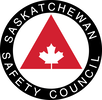

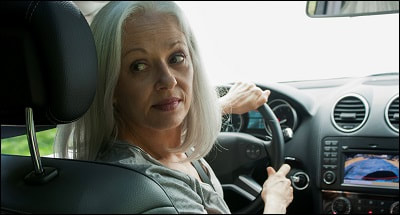
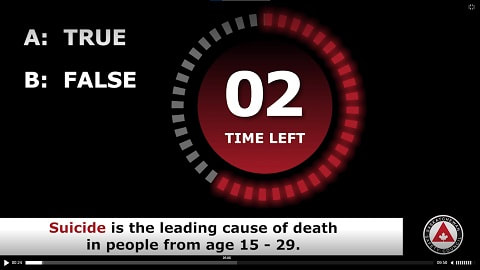

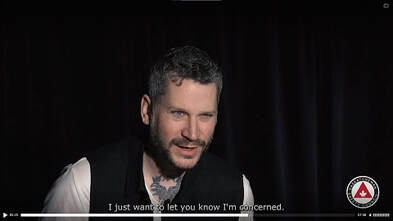
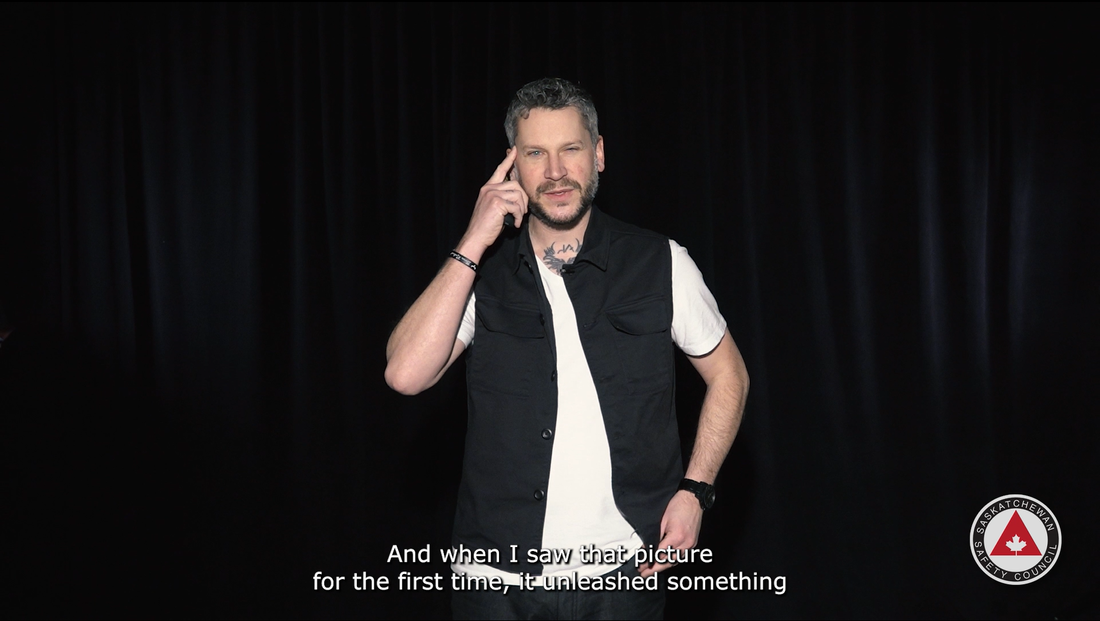
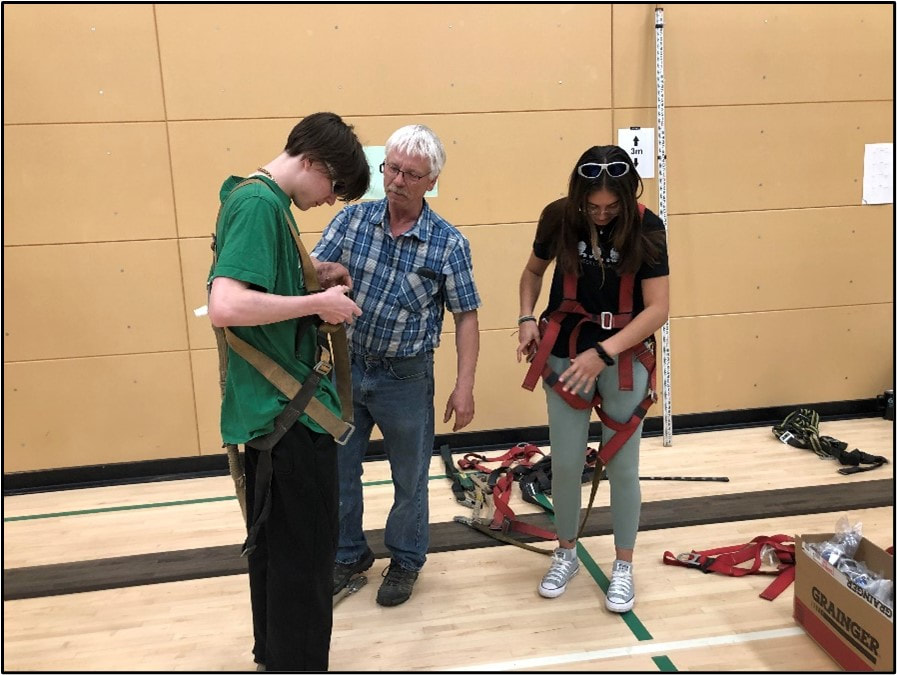
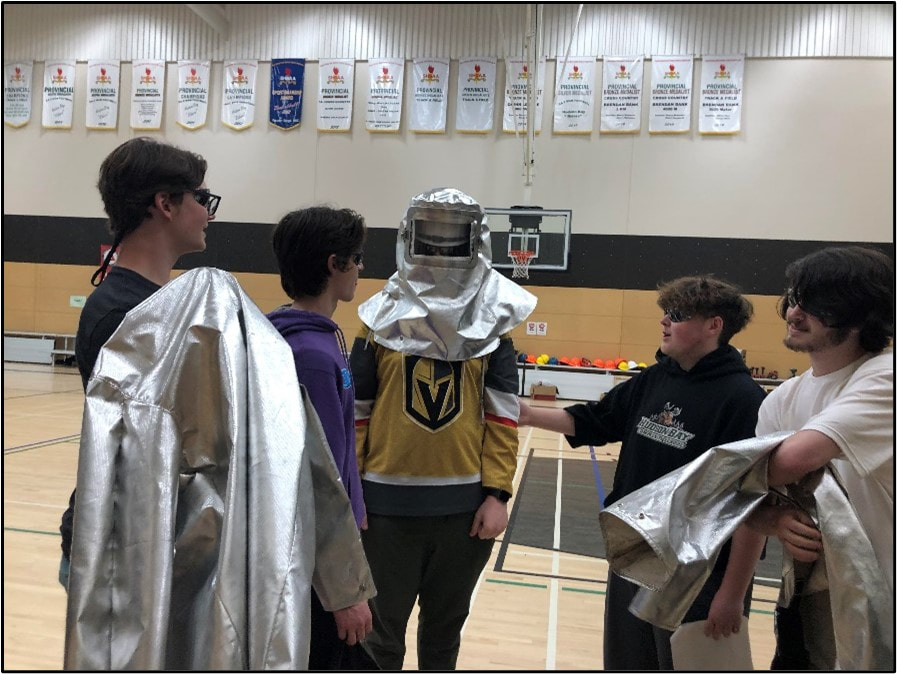
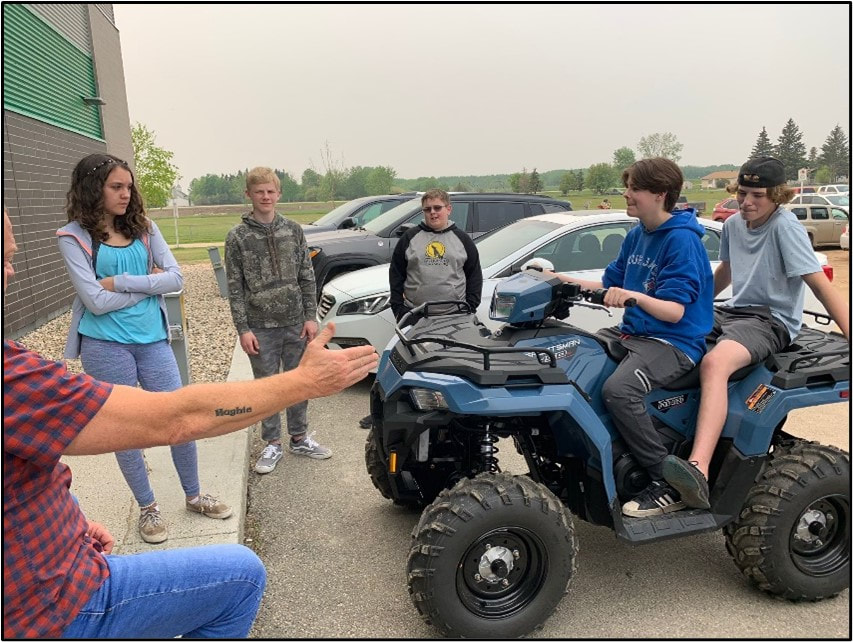
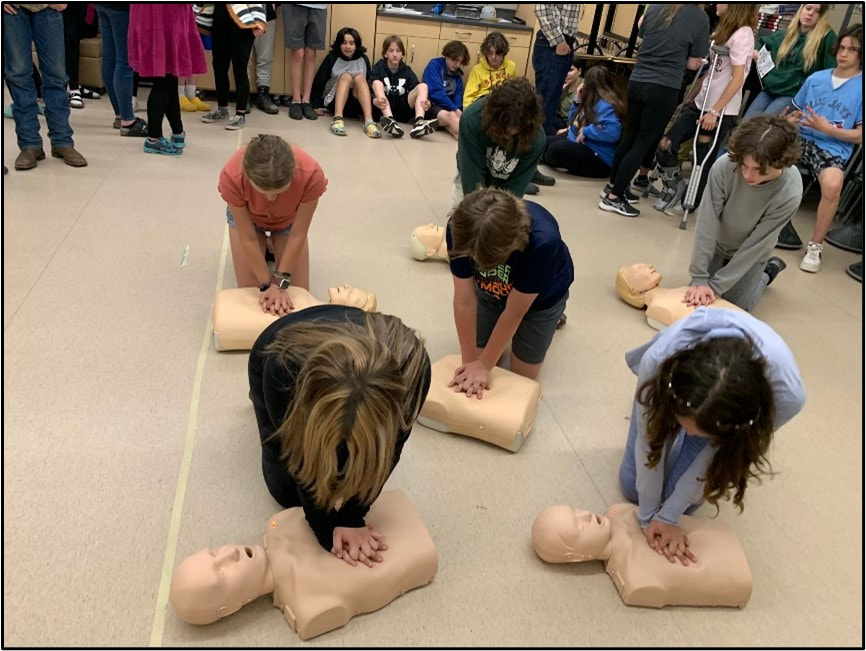
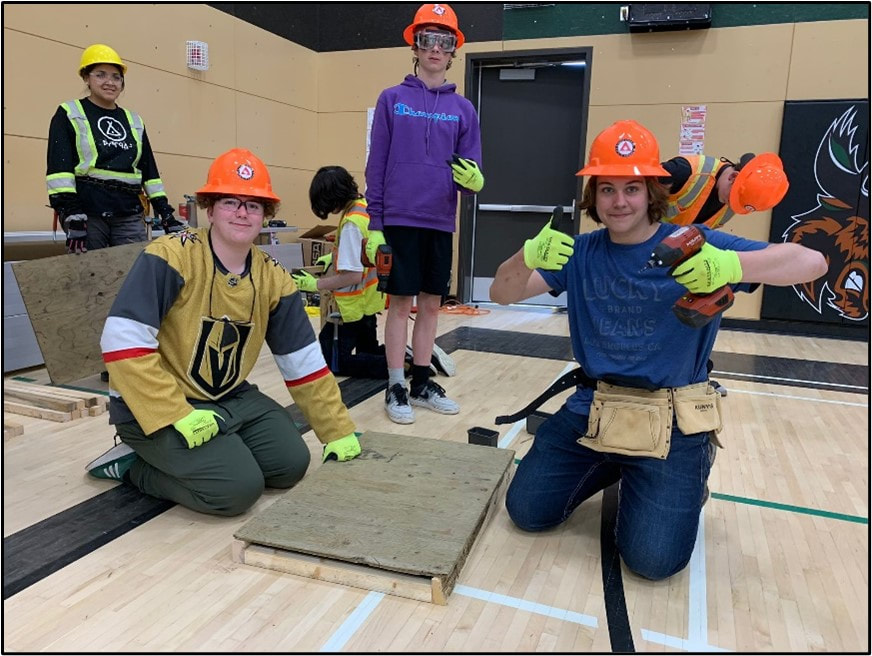
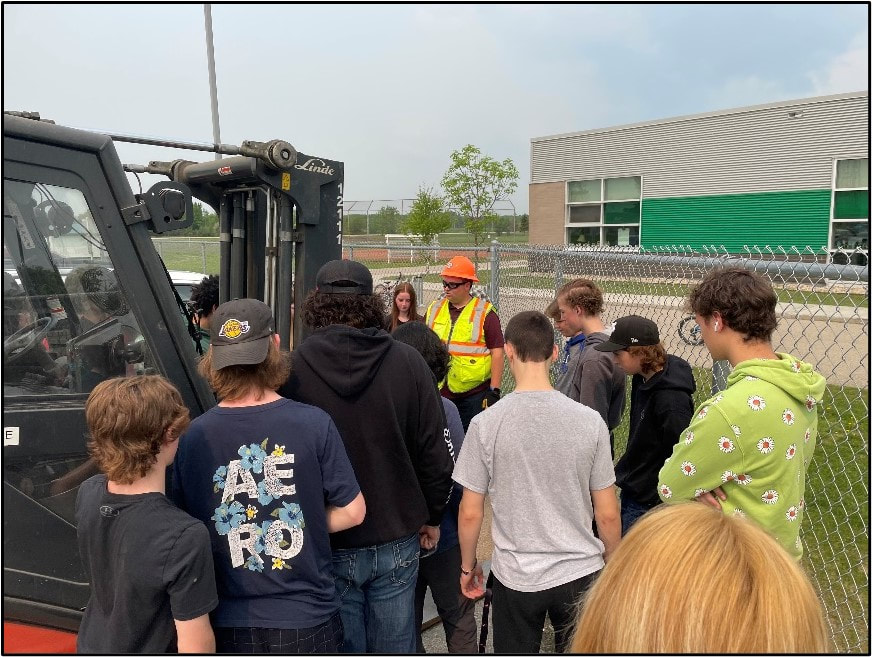
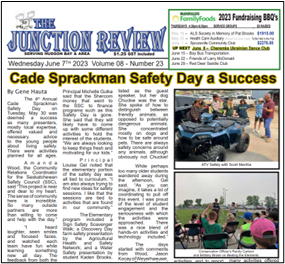
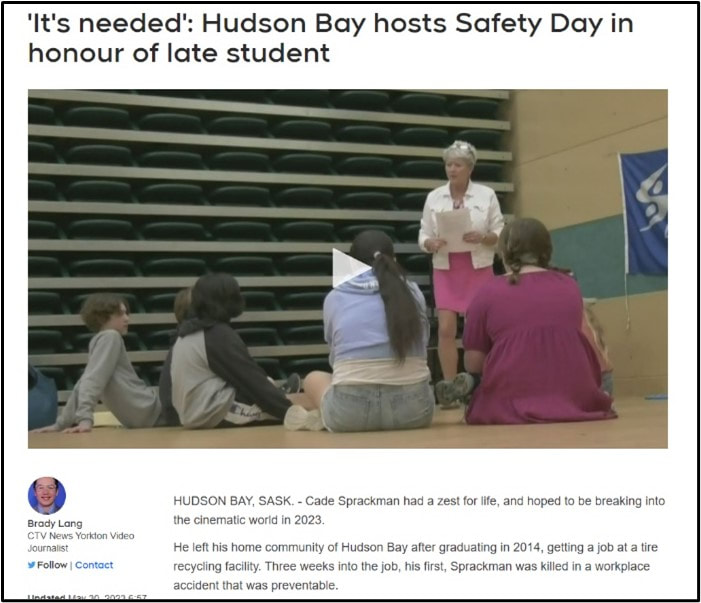

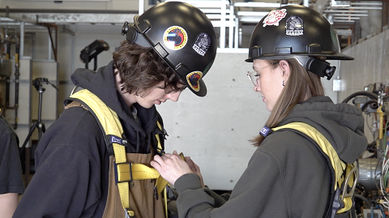
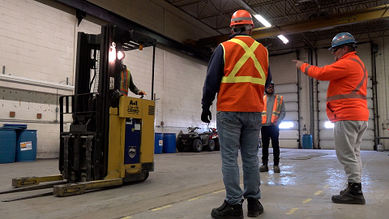
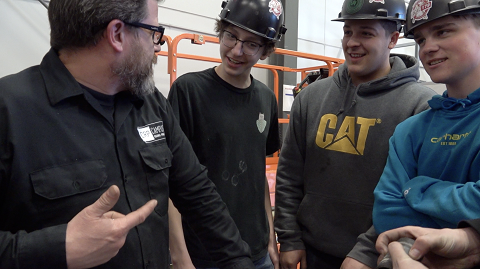
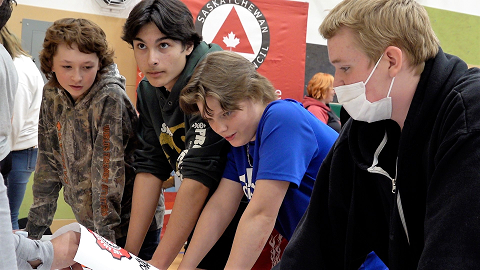

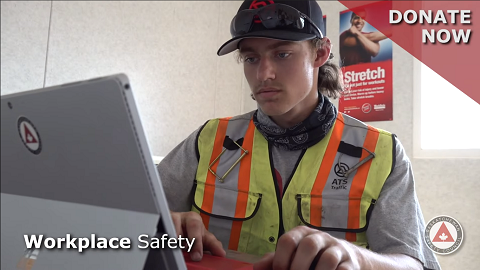

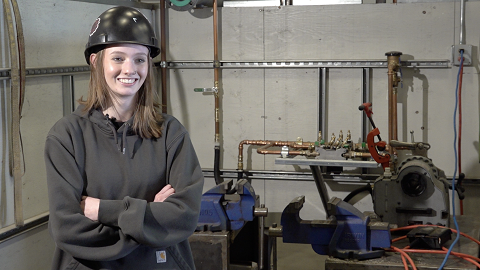

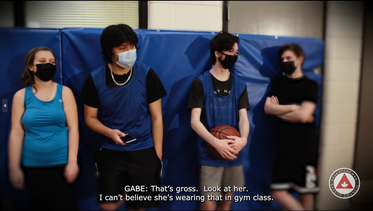

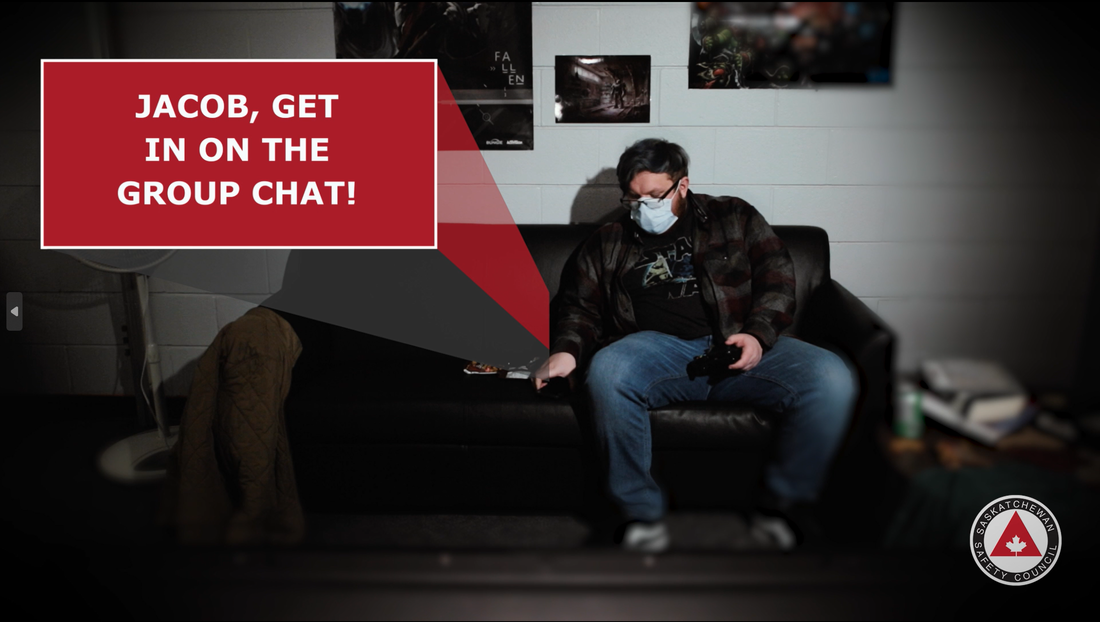
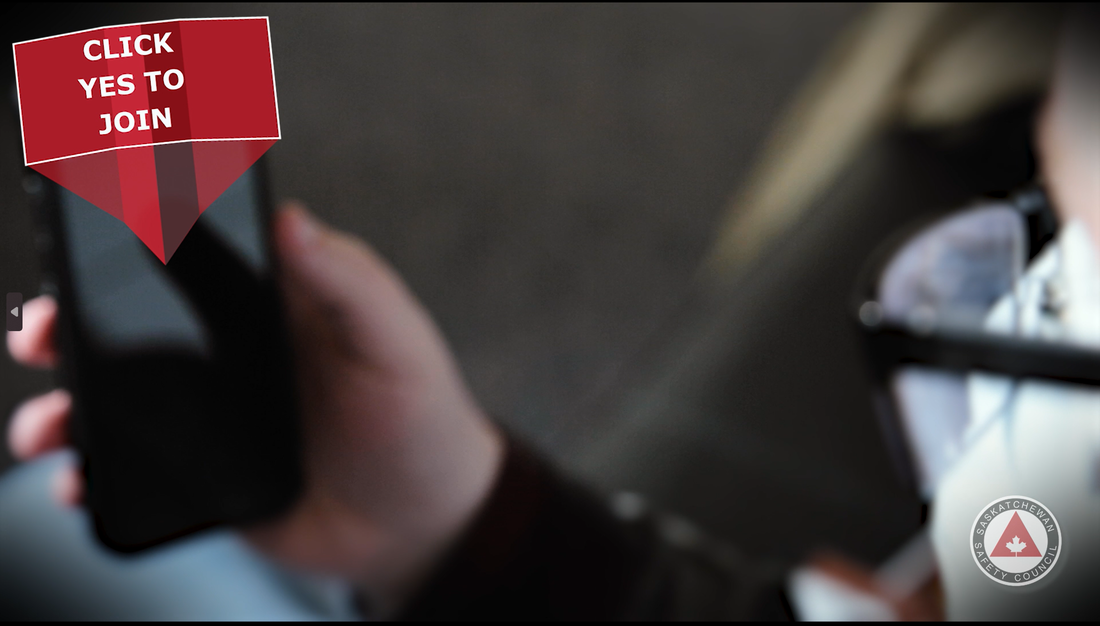

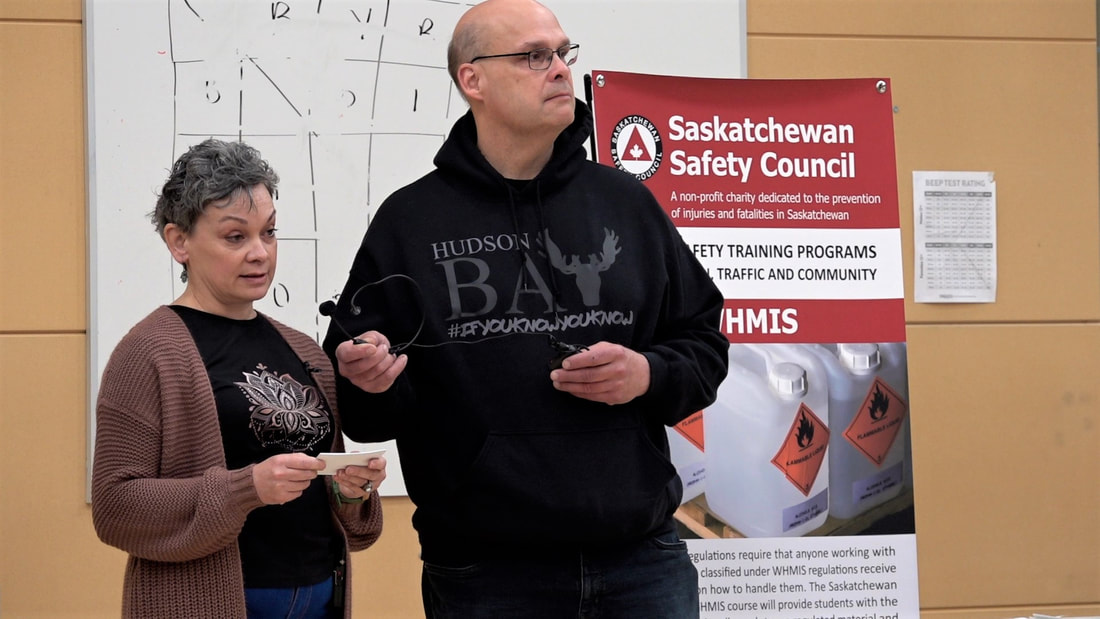
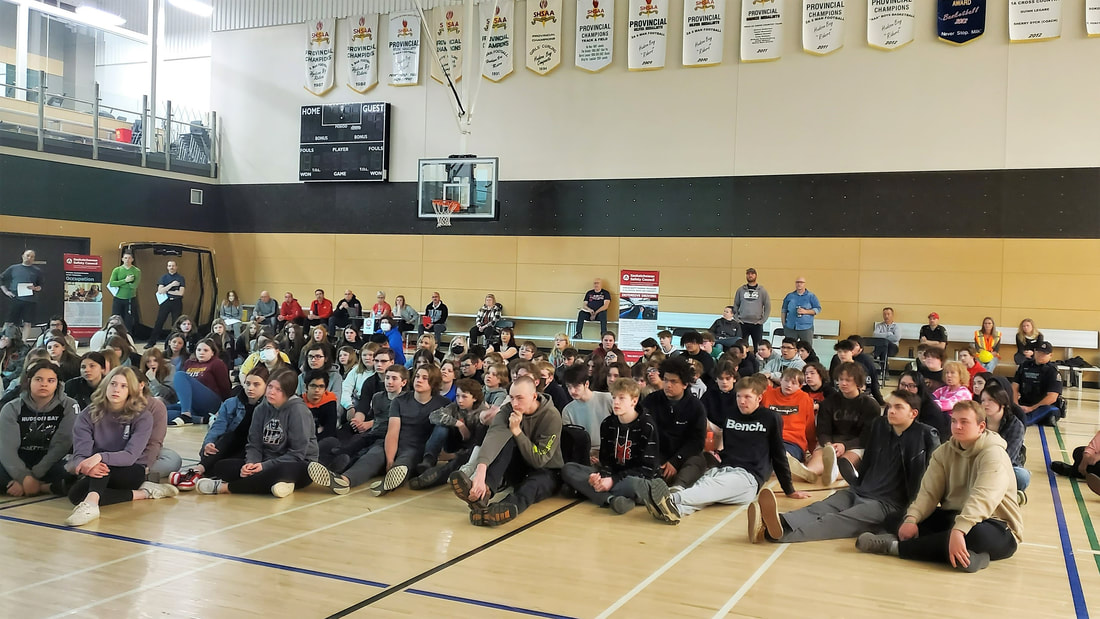
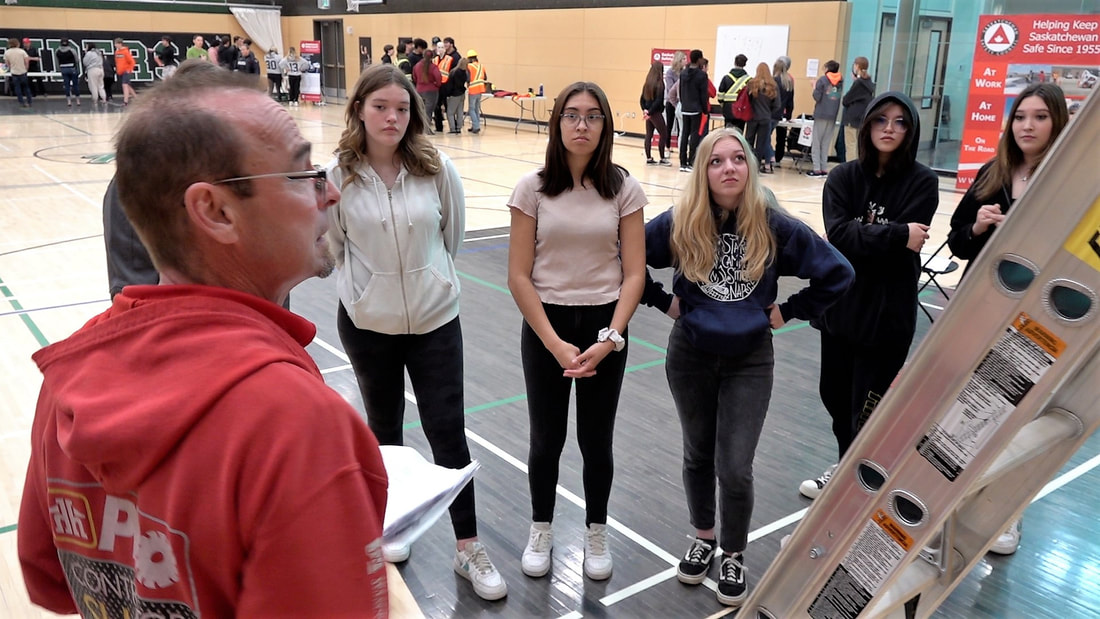
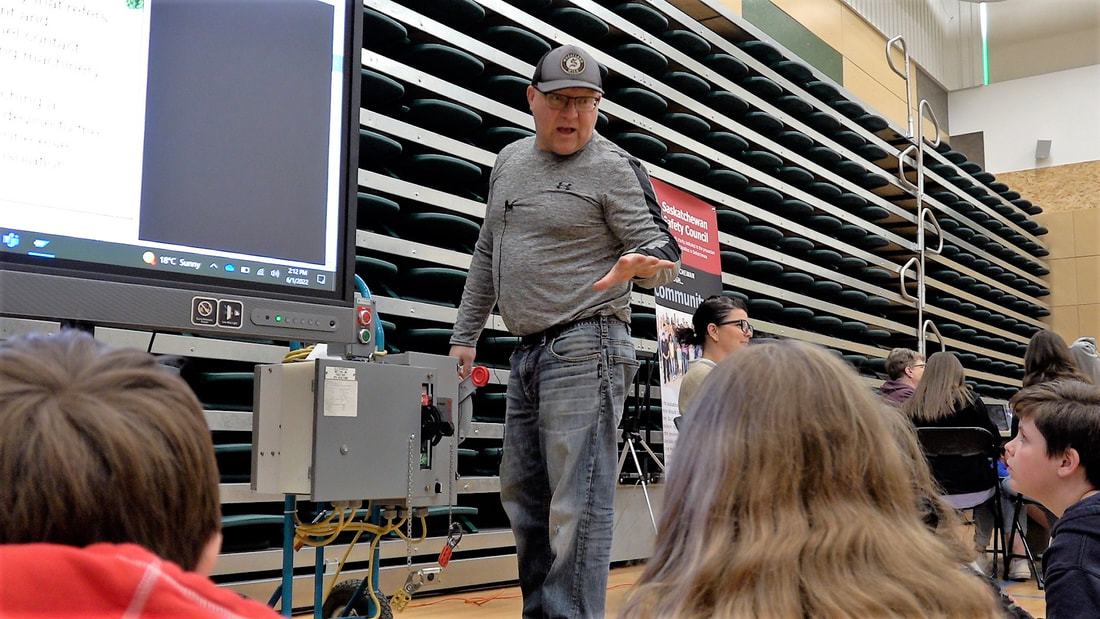
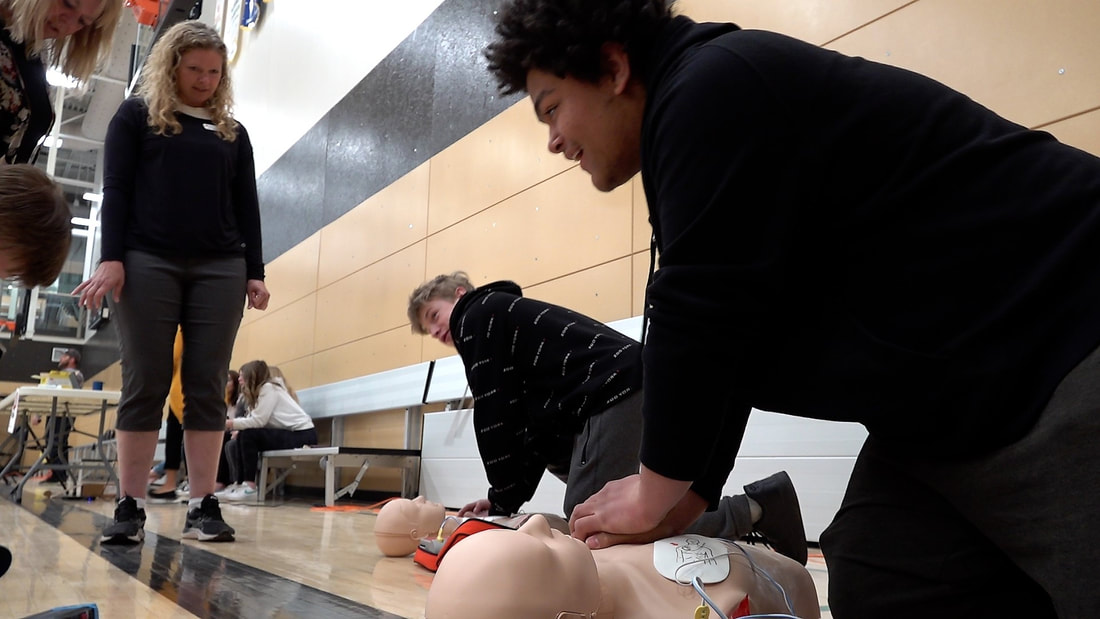
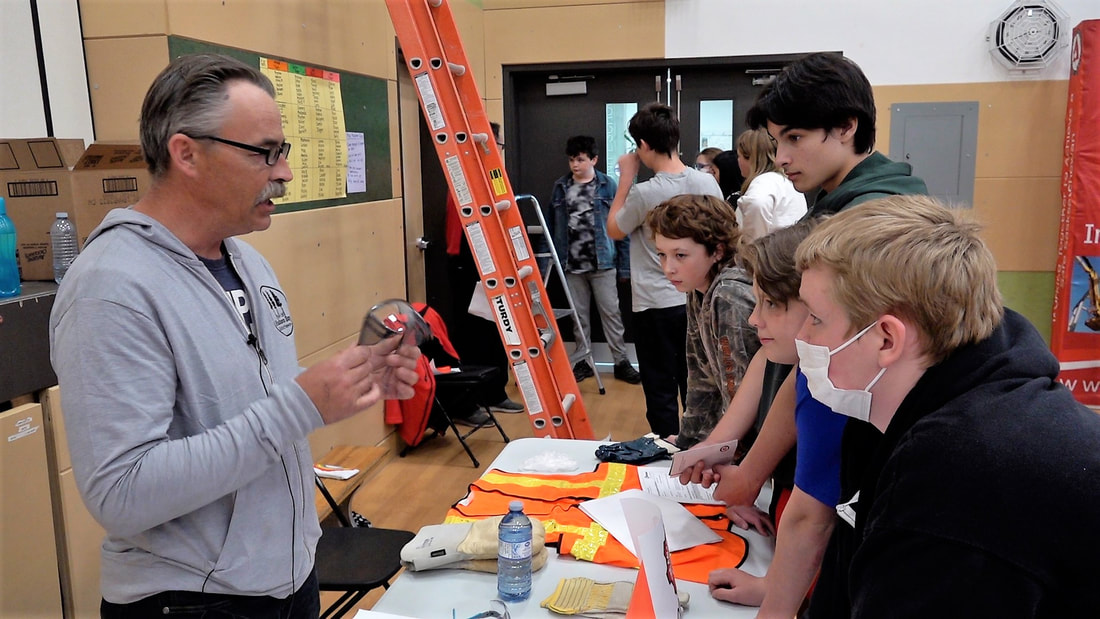
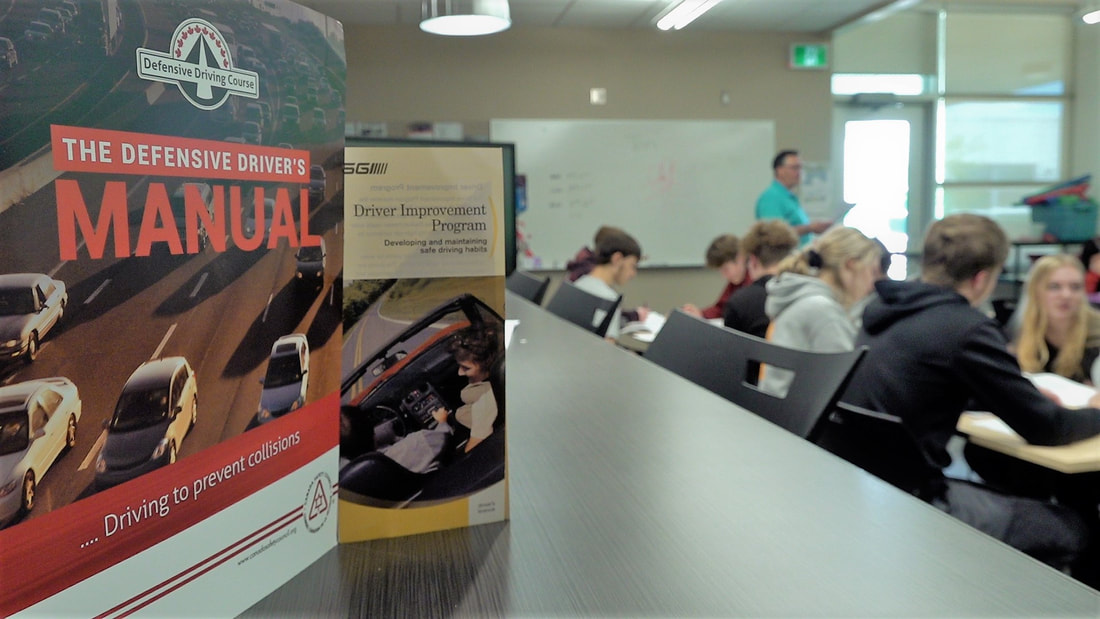
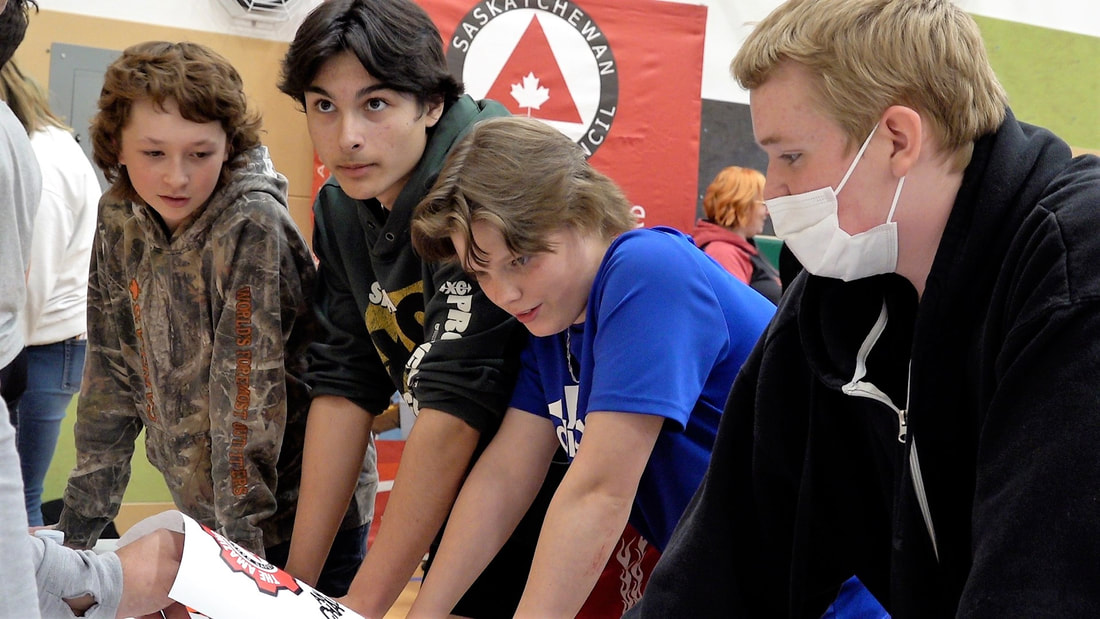
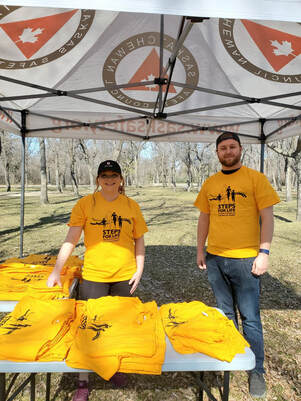
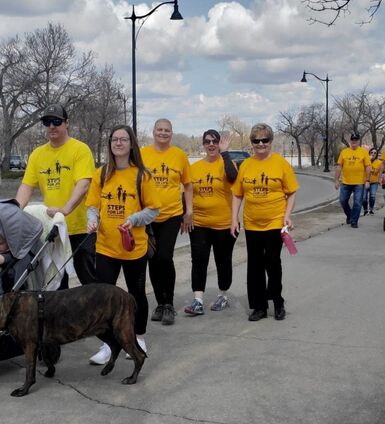
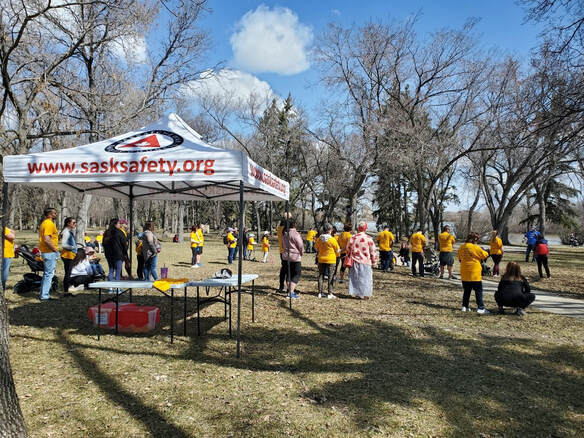

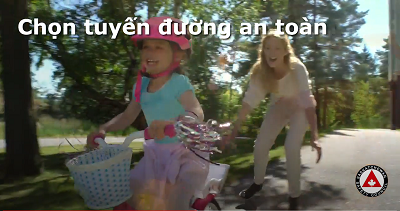
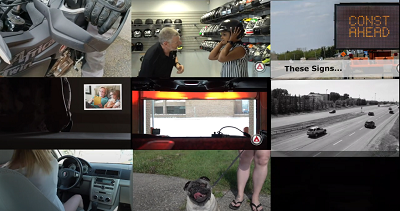
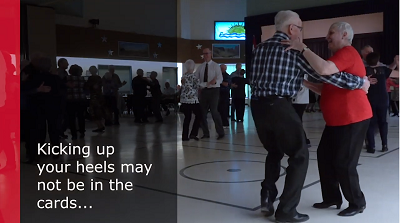

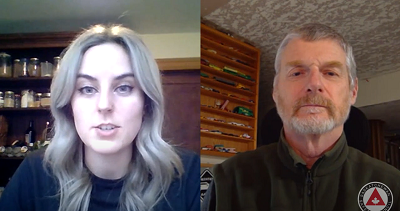
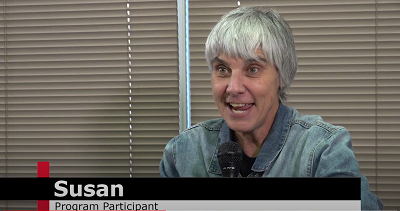

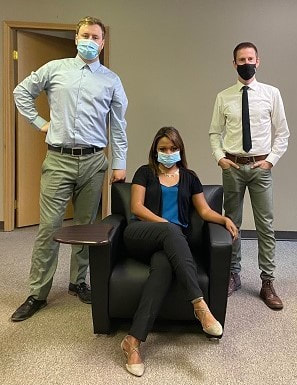
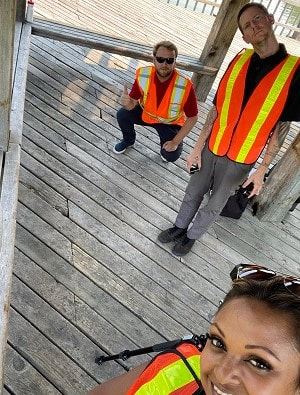
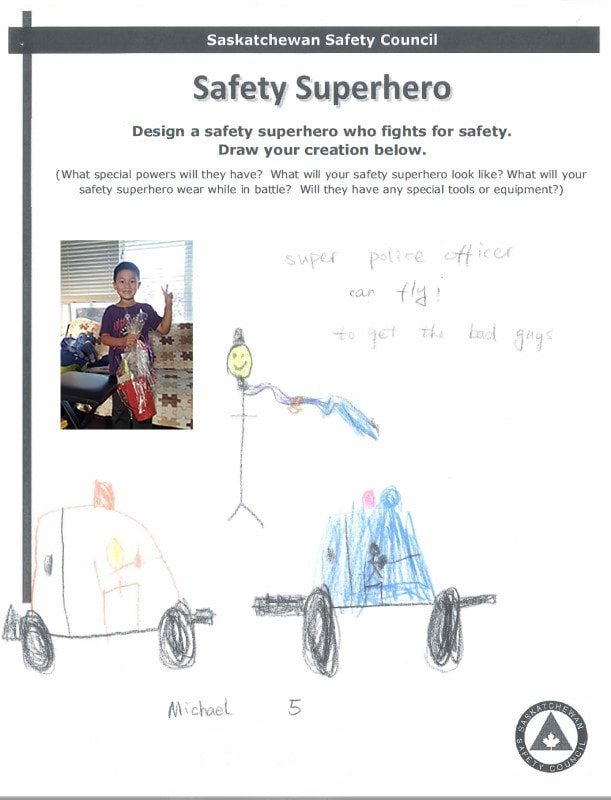
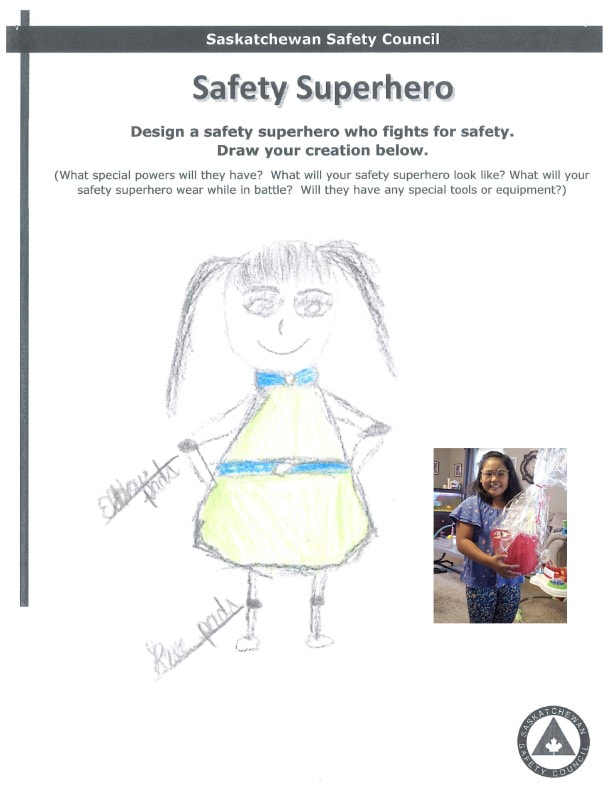
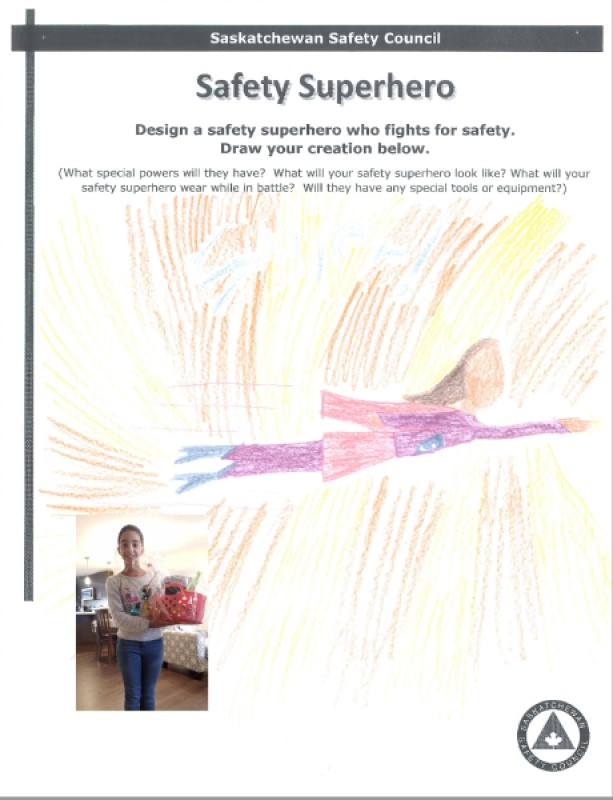


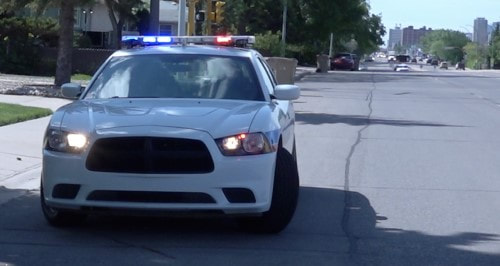
 RSS Feed
RSS Feed
